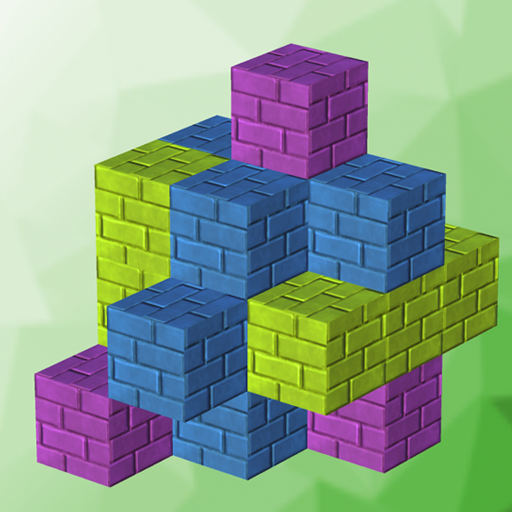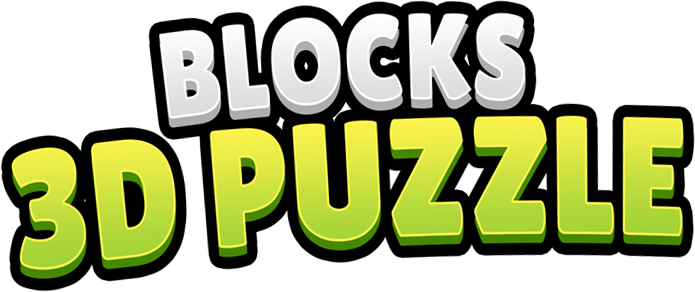Tabla de contenido
Expectations of 3D Puzzle Seekers
In the vibrant digital arcade of the Google Play Store, seekers of brain-teasing challenges often set out on a quest for the ultimate 3D puzzle app – a genre revered for its ability to twist and tantalize the mind with its spatial complexity. Users, fueled by an appetite for visual depth and immersive gameplay, enter this virtual realm with expectations of encountering a gallery of apps where objects must be rotated, levels intricately navigated, and spatial conundrums unraveled in truly three-dimensional spaces.
Reality Check: The Prevalence of Match 3D Games
Yet, there’s an intriguing twist in this cybernetic labyrinth of entertainment. Those in pursuit of 3D puzzle games are frequently met with an unexpected contender—a cascade of Match 3D game results. These games, with their addictive simplicity, present a curious puzzle of their own: why do they flood the search results under the guise of ‘3D puzzle’ when they embody a distinct species within the gaming ecosystem? Far from the complexity that true 3D puzzle enthusiasts seek, these Match 3D games offer a format reminiscent of a classic memory game, where the satisfaction lies in finding pairs in a cluttered space. However, these games often lack the multi-dimensional problem-solving that characterizes their true 3D counterparts.
This phenomenon sparks a question worth pondering: why does the algorithmic curator of the Google Play Store favor these patterned parades of Match 3D games over the labyrinthine landscapes of authentic 3D puzzles? Unraveling this digital knot requires a delve into the mechanics of App Store Optimization (ASO), the subtle art that decides which apps rise to the limelight and which remain in obscurity. By probing into the ASO strategies employed, we may uncover the digital strings that elevate Match 3D games in the search hierarchy, and in turn, shape the discovery journey of millions of users.
The prevalence of Match 3D games occupying the throne of search results intended for genuine 3D puzzles is a conundrum that does not merely reflect on algorithmic quirks. It is a reflection of the intricate dance between user behavior, developer strategies, and the ever-evolving algorithms that dictate what users see. To grasp this phenomenon is to gain insight into the broader dynamics of app visibility and discoverability that drive user experience in this digital marketplace.
As we chart the course through this investigation, we anticipate encountering the many layers that contribute to this digital misalignment—from the allure of Match 3D games and their ease of gameplay to the complexities of ASO that inadvertently create a shadow over the true 3D puzzles longing for their moment in the spotlight. It is an exploration not just of games and puzzles, but of the intricate interplay between human expectation and digital presentation—a narrative that captures the essence of the search for dimensionality in a digital age.
Understanding Match 3D: A Closer Look
Match 3D games, a distinct genre within the mobile gaming landscape, operate on a principle quite different from the intricate mind-benders that one might associate with true 3D puzzles. At their core, Match 3D games are designed around the simple and satisfying mechanic of identifying and matching pairs of items. In these games, players are presented with a cluttered play area—often a box or a flat surface—littered with various objects. The task is to find two identical items amongst the chaos and select them in succession, causing them to disappear or “pop” from the board.
The gameplay loop is intuitive and straightforward: observe, match, and clear. As players progress, the level of complexity increases, not through spatial puzzles or navigational challenges, but rather through the addition of more items, similar-looking objects that can easily be mistaken for one another, and occasionally, time limits that add a sense of urgency to the gameplay. This progression creates an engaging experience, often enhanced with power-ups and special items that help clear the board faster or provide hints.
To understand the distinction between Match 3D games and true 3D puzzles, one must delve into their core gameplay elements and objectives. True 3D puzzles typically involve the manipulation of objects or environments within a three-dimensional space. Players might need to navigate complex structures, solve physics-based challenges, or manipulate pieces to fit together in a specific pattern or configuration. The emphasis in these puzzles is on spatial awareness, logical reasoning, and sometimes physics, as players must often consider the interplay between multiple components within a three-dimensional context.
In contrast, Match 3D games reside primarily in the two-dimensional plane, despite the three-dimensional appearance of the objects on screen. These games do not typically require players to consider depth, gravity, or complex spatial arrangements. Instead, they rely on visual acuity and pattern recognition, as the player’s goal is to quickly identify matching pairs from a jumbled collection. The “3D” descriptor in Match 3D games refers mainly to the visual rendering of the items, which are designed to look three-dimensional on the screen, rather than any deep engagement with three-dimensional space in the gameplay itself.
The reason for this distinction is primarily rooted in accessibility and mass appeal. Match 3D games are designed to be instantly understandable and playable by a wide range of users, regardless of their familiarity with puzzle games or their spatial reasoning skills. This low barrier to entry ensures that these games can be picked up and enjoyed by users seeking a quick and casual gaming experience. The mechanics do not require prolonged attention or significant cognitive strain, making Match 3D games an ideal choice for short, intermittent play sessions, such as during commutes or while waiting in line.
In comparison, genuine 3D puzzle games often demand a greater level of engagement and mental effort from the player. They can involve complex problem-solving that may take significant time and thought to resolve, thus appealing to a more niche audience that actively seeks out cognitive challenges and the satisfaction of solving tough puzzles. This difference in audience and intent is crucial, as it speaks to the core of what users are expecting when they search for “3D puzzle games” in the Google Play Store. While Match 3D games satisfy the craving for a quick mental exercise, they fall short of delivering the rich, immersive experience that fans of true 3D puzzles crave.
Consequently, the prominence of Match 3D games in search results can be misleading for users in search of genuine 3D puzzles. As we will see in the exploration of App Store Optimization (ASO), this trend is not incidental but is a product of deliberate strategies that capitalize on the broader appeal and simple gameplay mechanics of Match 3D games to achieve higher visibility and user engagement in the app marketplace.
The Role of ASO in Puzzle Game Discovery
App Store Optimization (ASO) is a vital marketing strategy for developers seeking to enhance the visibility and discoverability of their apps within an app store’s search results. As with Search Engine Optimization (SEO) for websites, ASO applies to mobile apps, specifically targeting platforms such as the Google Play Store. It involves the meticulous tuning of various app metadata components, aiming to capitalize on the app store’s algorithms and rank higher in search results. The strategies are multifaceted, involving keyword optimization, visual asset refinement, and improving user engagement metrics, all of which can significantly influence the visibility of Match 3D games over true 3D puzzle games.
The fundamental principle of ASO is to use relevant keywords in an app’s title, description, and other metadata to improve its ranking for those terms. Developers carefully research and select terms they believe potential users will use when searching for apps within their category. For Match 3D games, this could include terms like “3D,” “puzzle,” “match,” and “game,” which are commonly used by individuals seeking out casual games that engage in pattern recognition and pair matching. By embedding these keywords into various aspects of their app’s listing, developers of Match 3D games optimize their chance of appearing in search results when users query for 3D puzzle games, even though their offerings differ significantly from traditional 3D puzzles.
Another critical component of ASO is the visual appeal of the app’s listing. This includes the selection of compelling icons, screenshots, and preview videos that accurately represent the game and entice users to download. For Match 3D games, developers often showcase vibrant graphics and animations that emphasize the game’s 3D elements, despite the gameplay operating on a largely 2D plane. This visual representation can attract users looking for 3D content, even if the actual gameplay experience does not align with that of a true 3D puzzle game.
User engagement metrics, such as download numbers, user retention rates, and engagement times, also play a significant role in ASO. App stores favor apps with high user engagement, as these metrics signal a quality and popular app. Match 3D games often boast simple, addictive gameplay mechanics that can result in high download numbers and strong retention rates, which subsequently improves their visibility in the app store. In addition, the user rating and review system contributes to an app’s ASO success. High ratings and positive reviews can increase an app’s credibility and visibility, while negative feedback can have the opposite effect. Match 3D games, with their broad appeal, often accumulate a substantial number of reviews and ratings, which can further boost their search ranking.
The title and subtitle fields of an app listing are other crucial ASO elements. A well-crafted title that incorporates primary keywords can significantly impact an app’s search ranking. For instance, the inclusion of “3D” in the title of a Match 3D game ensures that the game will appear in searches for 3D-related content, regardless of whether the game provides a true 3D experience or not.
Localization is yet another strategy under ASO, involving the adaptation of an app’s listing to cater to different languages and regions. This broadens the app’s potential audience and can dramatically increase its visibility and downloads. Match 3D game developers may use localization to appeal to non-English speaking users who search for 3D games in their native languages, further spreading their reach across the Google Play Store’s global user base.
It is essential to recognize that the Google Play Store’s algorithm, while proprietary and not entirely transparent, is known to consider factors such as relevance, keyword density, and user behavior. Apps that manage to strategically align with these factors through their ASO efforts stand a better chance of appearing before their competitors in search results. Match 3D games, through effective ASO, capitalize on the algorithm’s emphasis on relevance by appearing to match the search intent for 3D puzzle games, despite the gameplay differences.
Moreover, the Google Play Store algorithm frequently updates, prompting developers to continuously tweak and adjust their ASO strategies to maintain or improve their app’s ranking. This dynamic nature of ASO requires developers to stay informed about the latest trends and changes within the app store ecosystem, ensuring their apps remain competitive.
In sum, the principles of ASO are foundational in determining an app’s visibility on digital platforms. For Match 3D games, effective ASO strategies align with the Google Play Store’s algorithmic preferences, thereby leading to their preferential ranking when users search for 3D puzzle apps. This predominance in the search results, often at the expense of true 3D puzzle games, underscores the significant impact of ASO on user discovery and the digital marketplace at large.

Ultimately, the key to surmounting the current challenges lies in balancing algorithmic efficacy with user intent. Both players and developers seek a marketplace that accurately reflects the diverse landscape of 3D gaming experiences. If the Google Play Store and other app markets evolve to address the nuanced demands of their user bases, we might witness a renaissance in the discoverability of true 3D puzzle games. Until then, the onus is on users and developers alike to navigate the existing framework, making use of the aforementioned strategies to uncover and promote the true 3D puzzle experiences that are waiting to be discovered.
We invite our readers to comment on their experiences with searching for 3D puzzle games on the Google Play Store and any hidden gems they’ve discovered.
Access and download the free puzzle here for Android!
Access and download the free puzzle here for iPhone or iPad!

